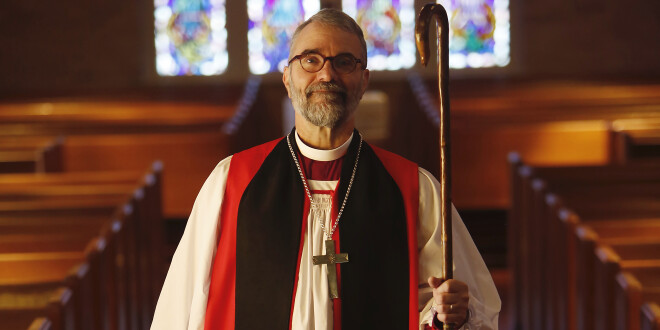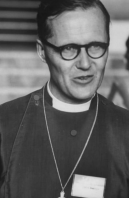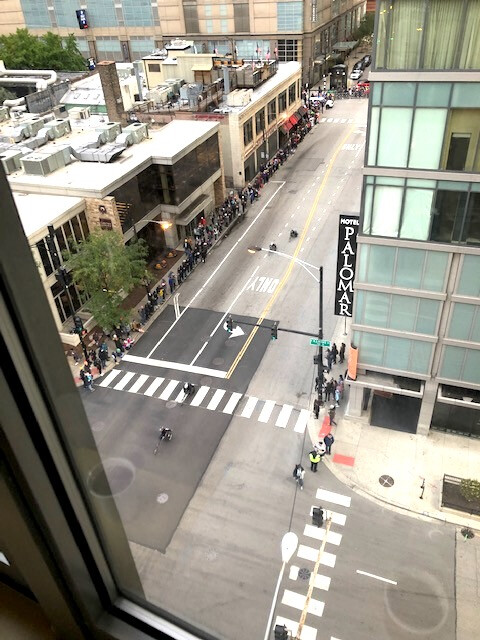Communion Matters: VIII: Birthday Observance

This series of blogs is communion as a concept and a reality, and why it matters to us. As such it has a close relationship to mission, the activity whereby churches come to be, by God’s grace, including their on-going relationship to one another. With respect to both the communion between churches, and the impulse to mission, no one was more important in the last century than Lesslie Newbigin. His death (or birthday into eternal life in the ancient church) a quarter century ago this week is a good time to recall him.

After his time at Cambridge as the leader of the evangelical student group (and a leading social activist!), Newbigin set out to south India as a missionary in 1936. He would stay for nearly a half century, as he mastered the Tamil language. After the creation of the Church of South India this Presbyterian pastor would become a bishop in apostolic succession, much to his surprise. His career tracks all the great themes of modern mission, and noting each directly informs our own missional situation.
The Church scene in India which Newbigin encountered included all the denominations in rivalry as we might expect. But as time went on, it became clear that the challenges all the churches faced were far more significant in the face of omnipresent Hinduism than the inherited theological differences. New settings in mission created the impetus for ecumenical reunion. (Though the Anglo-Catholics objected over the apostolic succession), a number of Protestant denominations, including the Anglicans, joined the new Church of South India. Newbigin played a leading role in its creation in 1947. Here we see the close connection precisely between mission and communion, between evangelism and the Church’s form. At the same time, Newbigin had a deep appreciation and friendly attitude toward Hindus and Muslims. He believed that Christians had in themselves no grounds for a sense of superiority, and that all religions, including the Church, are reduced to their knees at the foot of the cross of Jesus. By this he clarified how the Church does and doesn’t have a unique claim.
In the decade after World War II the churches of the Global South pressed for independence, and the age of colonialism came to an end. Newbigin was a theological leader in the new thinking, which sought to be more Christo-centric, as opposed to emphasizing the building up of the Church per se. The main agent of mission was God Himself, who in his very triune being sends the Son for the redemption the world. This emphasis came to be called ‘missio Dei,’ ‘the mission of God,’ and became very popular in the ensuing generation. Eventually Newbigin also became chary of the idea, when he saw how people came to identify what God was up to in the world in His mission with what they wanted him to be doing! (One scholar called it a ‘wax nose.’) Newbigin wanted the discernment of the missio Dei to be determined by the Word of God.
In the late 1970’s he returned to an England very different culturally from the one he had left. He came to see it with new eyes, as a mission field in itself, rather than as the cultural norm one might assume of home. This experience of ‘turning the lens’ and seeing the familiar as new, problematic, was connected to being a missionary accustomed to a certain sympathetic detachment. He came to see more clearly that the Church needed all its branches, in their widely different cultural settings, to be in communication with one another, to encourage but also challenge one another, so that things that seemed ordinary in one place might be shown to be cultural accretions rather than outgrowths of the Gospel. One might call this a principle of ‘recognizability.’ Can Churches of other cultures recognize a change as consistent with the Gospel, and can we do the same for them? Here the cultural diversity of the global Church serves to bring a mutual testing to one another, and so communion is intimately related to truth. One can see how applicable this last idea is to our own membership in a global family of churches from different cultures in the Communion.
Finally, the popularity of the very word ‘missional’ as a way to describe our thinking about the nature of the Church comes from the community of thinkers in the wake of Lesslie Newbigin’s work. He continued his work in a cross-cultural parish in Birmingham, though blind and in his 90’s. May a fraction of his spirit for mission be found in us.
Peace,
+GRS



